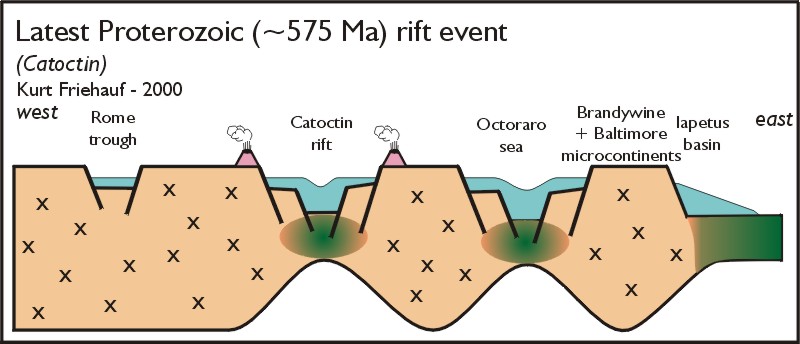Brief outline of Pennsylvania’s Geologic History
Kurt Friehauf
575 million years ago – late Precambrian rift event
Following a long period of relaxation and erosion, during which time weathering processes such as rain and wind wore down the Grenville Mountains, the supercontinent began to break apart. Geologists call this pulling-apart stage a “rift event.” The result was the formation of a big new ocean to the east (called the Iapetus Ocean), and several small seas (e.g., the Octoraro sea). The continent didn’t break up along a single, smooth line, though. Instead, part of the continent’s edge splintered, forming a few tiny continents called “microcontinents.” These microcontinents were large islands off the coast. The process of pulling a continent apart has an important impact on rocks deep below the surface, too. The pulling-apart motion of the plates causes some of the deep rock to melt, forming molten magmas that can rise to the surface and spew out as volcanic eruptions. On the surface, pulling the crust apart forms broad valleys called basins as the crust stretches like salt-water taffy. Sediment (sand, mud, etc.) washes off the mountains into these valleys, forming thick piles of sedimentary rocks.
